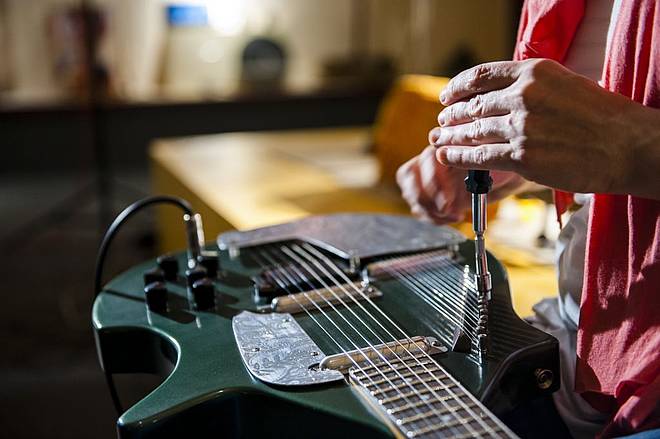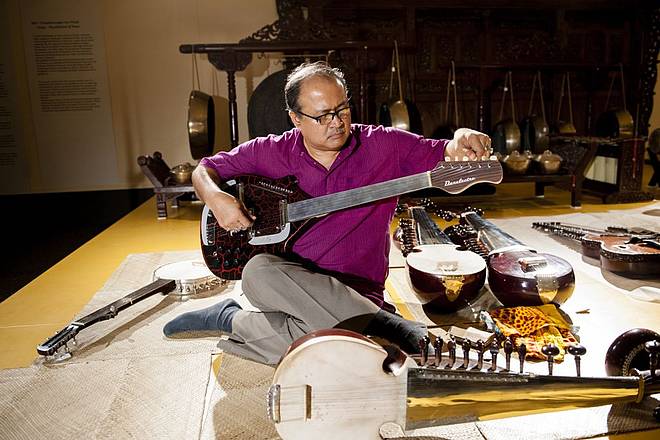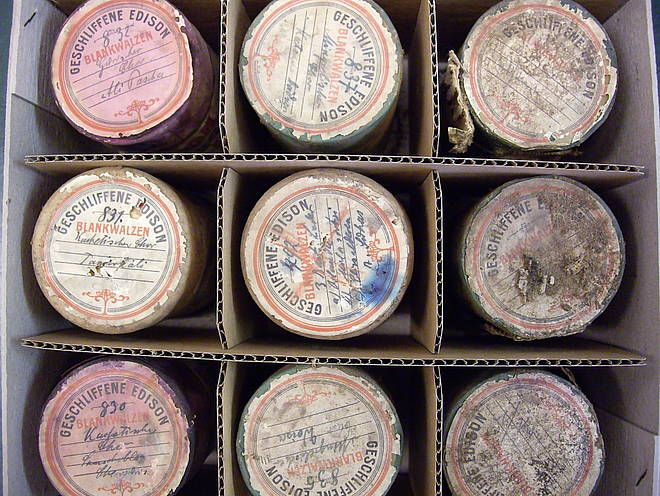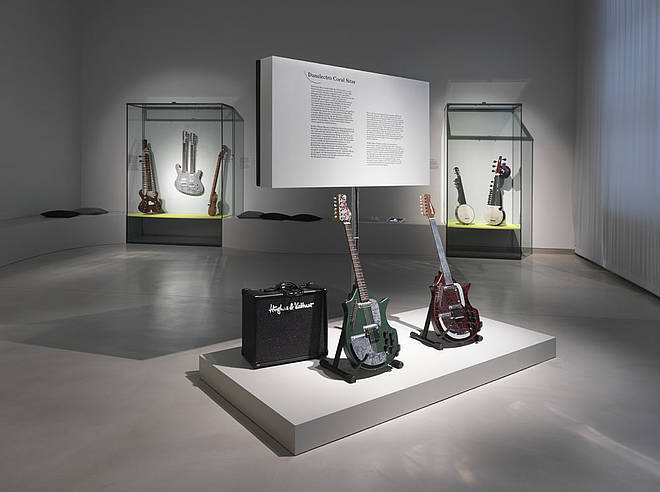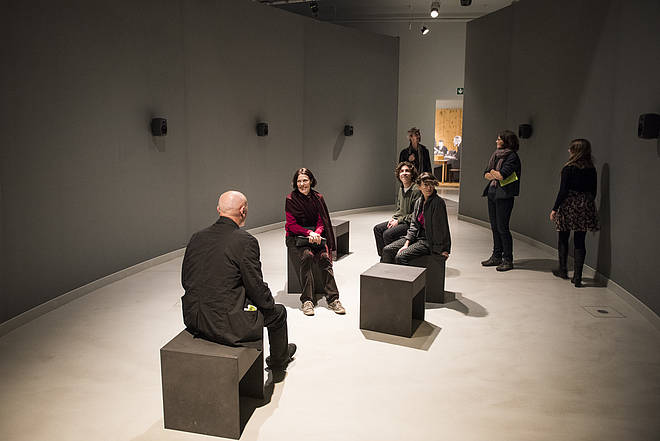Music listening, November 9, 2014 through October 18, 2015
The focus of “Music listening” is based on the collections from the department of ethnomusicology, media technology and Berlin Phonogram Archive of the Ethnologisches Museum (Ethnological Museum), which will be given a prominent exhibition space in the Humboldt-Forum. How can a sound archive and its very different content be exhibited and made audible and tangible? And how can sounds be linked to objects and photographic records in an interesting way? In order to answer these questions, scientists and artists have collaborated closely to prepare different themes as program elements. In part these programs are planned as a presentation within the planned listening space and in part they are to be integrated into other exhibition areas, in order, for example, to illustrate the construction process of musical instruments or to underpin exhibited photographs and archive materials with historical sound recordings.
Currently shown:
Activated Sounds
As part of an artistic analysis, Werner Durand developed a program that viewed the fieldwork recordings from the sound archive of the Ethnologisches Museum from a very specific perspective: buzzing, rasping, rattling – secondary sound phenomena like resonating strings, working with diverse materials like metal, leather, plastic, and paper, as well as from flora and fauna (amongst other things, bat wings and spiders webs,) are brought to life in the listening space. Con- temporary and experimental sound samples round off and contrast ideas of “traditional” music, whilst challenging the European concept of “tonal harmony.”
Making of … Musical instruments – construction techniques, design, aesthetics of sound
Musical instruments and sound objects are constructed according to aesthetic concepts that are based on culturally specific sound expectations. Diverse materials are used to create sound-making objects. Thereby own cultural concepts play as significant a role as processes of integration of initially alien aesthetics and materially dependent ideas. The inherent connections between issues of sound aesthetic and construction, parameters, design and ornamentation provided the idea for an intercultural experiment: an Indian and a German instrument maker exhibit instruments; the makers and musicians describe the (ideal) sound. The project was realised by Barbara Jungfer, Nick Page, Radhey Shyam Sharma and Somjit DasGupta.
Phonographic Commission (Friederike Heinze)
The wax cylinder recordings with the accompanying archival documentation from the Phonographic Commission that were made in German prisoner of war camps during World War One, are important documents in terms of the history of science. From reports by musicologist Georg Schünemann, who collaborated with the Phonographic Commission, as well as through historical photos and documentation, we are given an insight into the research work of the period and of the knowledge thus accumulated. The almost centuryold sound recordings, on which a large number of ethnic groups are represented, create bridges to the here and now whilst highlighting the question of their contemporary significance, especially for the so-called source communities.

